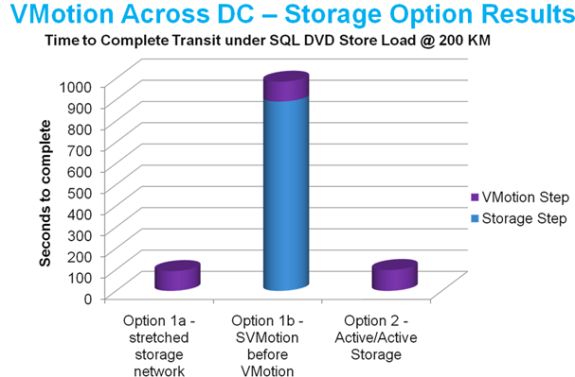Hybrid Clouds: are we there yet?
by Johan De Gelas on October 18, 2010 2:05 PM EST- Posted in
- IT Computing
Telecom finally enters the 21st century
Telecom devices used to belong to a dark world where the vendors still rule and customers have to cope with their wims. Although modern telecom software is interfacing with mailboxes, VOIP and web conferencing, most telecom vendors force upon the sysadmins proprietary boxes which are completely closed. The vendors felt they could ignore the evolution towards modern flexible virtualized clusters. The motto was "We can only support you if you use our software on our hardware with specialized firmware". The "it will not work otherwise" smokescreen needed to hide the fact that vendors made customers pay premiums for outdated hardware.
Mitel put a cat among the pigeons by offering their software a virtual appliance, i.e. an OVF image. The Virtual Mitel Communications Director (VMCD) does not demand its own server like the rest of the haughty telco software, but humbly installs itself on the virtual layer of your datacenter.
It only requires that you reserve 2 to 4 cores and 2 to 4 GB of RAM so it can do its work for up to 1000 active users. Those cores must be an 2 GHz EPT (Hardware MMU) enabled Nehalems or better. The only supported hypervisor so far is VMware's vSphere 4.0 update 2.
Summary
It is pretty clear: advanced virtualization technology brings the advanced capabilities of the "public clouds" inside the datacenters of many enterprises. The virtual intelligent cluster is not going away, especially now that even the most "stubborn" applications such as OLTP databases and telco software are being virtualized.
New "hybrid cloud" management software (vCloud Director, openQRM) will allow the sys admin people to offer the users an easy self service portal. At the same time the sys admins get a single pane to control both the public as the private cloud resources. We are not there yet. More advanced "cloud" networking software and storage migration tools will make it a lot simpler to seamlessly move virtual machines from your own premisses to the large datacenters and back.
But we are getting close. At the high end, EMC VPLEX technology shows that this will become a reality even more for massive migrations that involve moving hundreds of VMs over great distances. And if you only want to move a few VMs from time to time, that is already possible with some careful tweaking, although not fully supported. Just take a look at the benchmark below, done by the EMC lab.
VMware vSphere build-in Storage vMotion does the job of moving a complete VM + datastore to another datacenter a lot slower than the VPLEX setup (option 2) but it works without disruption. It won't take long before the Hybrid Cloud will also arrive in the smaller and medium IT business too.












26 Comments
View All Comments
chusteczka - Wednesday, October 20, 2010 - link
This author needs to submit his work to a proofreading editor before it gets published.akocsis - Wednesday, October 20, 2010 - link
There are absolutely no words about Microsoft's offering - Azure - in the article. Why do you think they are not in the game? Azure is a totally different approach, as you buy computing "blocks" (which are VMs in the background), not the VM's itself. You don't want to maintain VMs, you want computing capacity without the need of OS maintenance...Exelius - Wednesday, October 20, 2010 - link
Azure is not flexible enough for general purpose loads. Great if you're developing a .NET web app; not so much if you're trying to run an ActiveDirectory backup DC. It's nice to be able to ship a .vmdk across the internet to clone a server.JohanAnandtech - Friday, October 22, 2010 - link
Remember, we told you in the first lines that we would focus on Infrastructure as a Service. Azure is PaaS and is only natural that it does appear in an article about IaaS.billt9 - Thursday, October 21, 2010 - link
speaking solely from a personal computing viewpoint - unnecessary; expensive; insecure. The whole PC revolution was AWAY from central computers with dumb terminals.landerf - Wednesday, October 27, 2010 - link
A note on the negativity towards cloud computing. A lot of it ignores the situational benefits in favor of fear, fear of losing freedoms and being vulnerable to centralized security targets. I can understand that, as it may be a valid concern. Companies using clouds will inevitably force the tech on the general consumer in a more and more invasive way in the decades to come. Cloud computing certainly has it's uses, but I'd never want it to take over. Even in a future where we have absurd bandwidth and nil latencies the idea of centralization is always a bad one. With "clouds", power plants, or the forever proposed wireless electricity grid, you're always setting yourself up for failure. Decentralization and redundancy are by far the best solutions. Every neighborhood in the future should have it's own power plant, every person should have all of their personal data embedded in their body, only sharing what they want when they want. On mass identity theft would be obscure, fear over catastrophic accidents or attacks would be averted. At the end of the day, decentralization is always better, including with the backbones used to share data.